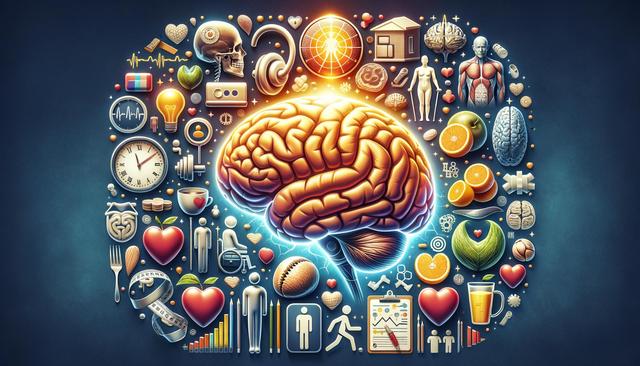Understanding High Blood Pressure and Its Link to Stroke
High blood pressure, also known as hypertension, is a major risk factor for stroke. When blood pressure remains elevated over time, it puts excessive stress on blood vessel walls, increasing the likelihood of damage and blockage. This can eventually lead to a stroke, either through the rupture of a weakened vessel or the formation of a clot that obstructs blood flow to the brain. Recognizing the early warning signs of high blood pressure is crucial for prevention. Common symptoms in adults may include persistent headaches, dizziness, blurred vision, and shortness of breath, although many individuals experience no symptoms at all. Regular monitoring and early intervention can significantly reduce the risk of complications.
Managing blood pressure effectively is essential not just for stroke prevention but also for recovery. Individuals who have suffered a stroke often benefit from stabilizing their blood pressure as part of their rehabilitation strategy. This helps prevent further vascular events and supports brain healing. A comprehensive recovery plan should include regular blood pressure checks, medication adherence, and lifestyle adjustments tailored to each individual’s needs.
Natural Strategies to Manage Blood Pressure After a Stroke
For stroke survivors, incorporating natural strategies to manage high blood pressure can enhance overall recovery outcomes. These methods not only support cardiovascular health but also improve general well-being. Key lifestyle changes that can help regulate blood pressure include:
- Adopting a low-sodium, nutrient-rich diet focused on fruits, vegetables, whole grains, and lean proteins
- Engaging in regular physical activity, such as walking or light stretching exercises approved by a healthcare provider
- Reducing stress through techniques like meditation, deep breathing, or gentle yoga
- Limiting alcohol consumption and avoiding tobacco products
These strategies can be particularly valuable when combined with medical treatment. While medications play a central role in managing hypertension, natural approaches offer additional support that aligns with long-term health goals. Many individuals notice improvements in blood pressure readings and energy levels through consistent lifestyle changes. However, it is important to consult a healthcare provider before making significant adjustments, especially after a stroke.
The Role of Rehabilitation in Stroke Recovery
Stroke rehabilitation plays a key role in helping individuals regain independence and function. A tailored rehab program typically includes physical therapy, occupational therapy, and speech-language therapy, depending on the areas affected by the stroke. These therapies not only support motor and cognitive recovery but also contribute to better cardiovascular health by encouraging movement and circulation. In addition, managing high blood pressure during rehabilitation is essential to avoid recurrent strokes and support healing.
Rehab professionals often work closely with patients to create a plan that incorporates blood pressure management. This might involve:
- Educating patients about the importance of medication adherence
- Monitoring vitals regularly to track progress
- Introducing safe exercise routines to promote cardiovascular strength
By integrating blood pressure control into the rehab process, patients have a greater chance of achieving meaningful recovery milestones. It’s also an opportunity to build lasting habits that support long-term health.
Connecting with Specialists and Community Resources
Finding the right medical and community support is a critical step in stroke recovery and blood pressure management. Primary care physicians, cardiologists, and neurologists all contribute to a cohesive care team. They can help identify the underlying causes of high blood pressure, recommend treatments, and provide referrals to rehabilitation services. Stroke survivors benefit from a coordinated approach that addresses both the physical and emotional aspects of recovery.
In many areas, local health centers and community programs offer resources specifically designed to support individuals managing hypertension and stroke recovery. These may include:
- Support groups for stroke survivors and their families
- Educational workshops on managing high blood pressure
- Access to nutritionists and fitness professionals
- Home health services for those with mobility challenges
Reaching out to these resources not only helps individuals stay informed but also provides encouragement and accountability. Many people find that connecting with others in similar situations strengthens their commitment to recovery and health goals.
Long-Term Strategies for Maintaining Healthy Blood Pressure
Maintaining healthy blood pressure levels over the long term is essential for preventing future strokes and other cardiovascular events. For stroke survivors, this means adopting sustainable habits that support heart and brain health. Ongoing medical care, including routine checkups and medication reviews, ensures that treatment remains effective. Lifestyle choices also continue to play a vital role in blood pressure regulation.
Key long-term strategies include:
- Scheduling regular visits with healthcare providers to monitor blood pressure and overall health
- Continuing with a balanced diet that supports vascular health
- Engaging in physical activity suited to personal abilities and recovery status
- Managing stress and prioritizing mental well-being
It’s also helpful to set realistic goals and celebrate progress, no matter how small. Whether it’s lowering your blood pressure by a few points or walking an extra block each day, every step counts. With time, these efforts can lead to significant improvements in quality of life and reduce the risk of future complications.
Conclusion: Supporting Recovery Through Blood Pressure Management
Stroke recovery is a multifaceted journey, and managing high blood pressure is a cornerstone of that process. By understanding the link between hypertension and stroke, implementing natural strategies, utilizing rehabilitation services, and connecting with local resources, individuals can take meaningful steps toward recovery. Long-term commitment to healthy habits and regular medical care not only supports healing but also empowers individuals to take control of their well-being. If you or a loved one is navigating stroke recovery, consider speaking with a specialist to create a personalized plan that includes effective blood pressure management and access to supportive care in your area.


